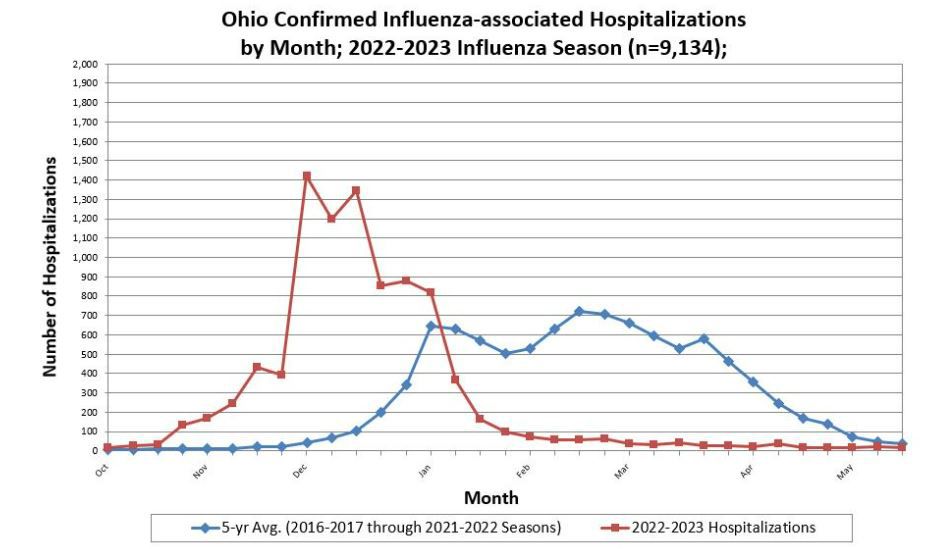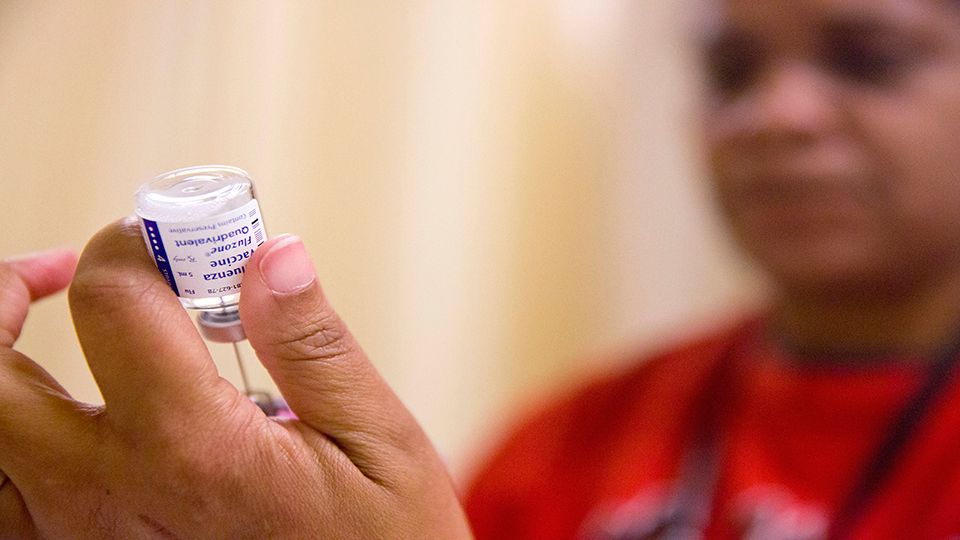OHIO — Fall and winter are around the corner, and with that comes flu season.
Ohio Department of Health Director Dr. Bruce Vanderhoff urged residents to get vaccinated as soon as the new version of the flu shot becomes available, and to be vigilant for COVID-19 and respiratory synclinal virus (RSV).
In addition, he announced Thursday the new shot for RSV will soon be available for babies.
Vanderhoff said RSV is the "leading cause of hospitalizations for infants under 1-years-old." This year, the U.S. Food and Drug Administration approved a RSV shot for babies, known as Nirsevimab, which was recently recommended by the Centers for Disease Control and Prevention.
Infants born shortly before or during RSV season, which typically starts in the fall and ends in the winter, should get a shot within one week of birth, Vanderhoff said.
Those younger than 8 months should get one shortly before RSV season starts. Babies who are between 8 and 19 months of age and have underlying risks that make them more vulnerable can also get a dose through their second respiratory season, as recommended by the CDC.
Vanderhoff said this shot could be widely available as soon as mid-October. Vanderhoff said it is going to be included in the federal Vaccines for Children program, which means it will be available for free for children of parents who may not be able to afford it otherwise.
"Flu vaccination remains very important," Vanderhoff said, adding providers should have this year's flu shot by early September.
Last year, Ohio was hit hard by influenza. According to ODH, there were more than 1,400 hospitalizations for the virus at the end of Nov. 2022. It's a stark jump — 35 times more — from the five-year average between the 2016-17 and 2021-22 flu seasons.

During that same period, in Nov. 2021, there were just 39 hospitalizations, according to ODH.
Doctors pointed to a lack of vaccinations causing the jump in flu hospitalizations, not just in Ohio, but across the country. According to the CDC, in Nov. 2022, there were around 4.5 million fewer adults who received the shot compared to 2021 during that same time period.
COVID-19 cases have been steadily rising over the last few weeks. ODH data showed around 2,054 cases were reported in the last week of July.
Then, in the first week of August, it jumped to 2,666. The week after, it was 2,991 cases.
Despite the increase, Vanderhoff said it's some of the lowest numbers recorded since the start of the pandemic. Last week, there were 87% fewer cases than this point last year, Vanderhoff said.
Vanderhoff added while numbers are overall low, the virus hasn't left.
“While this is generally good news, it’s also quite clear that COVID isn’t gone and that we really do need to prepare ourselves," Vanderhoff said.
He urged Ohioans to get the up-to-date bivalent booster, which includes protection against the most recent versions of omicron subvarients. He said it's especially important for those who are immunocompromised or 60 years and older to receive the shot, as they are at high risk of getting severe symptoms from COVID-19.



